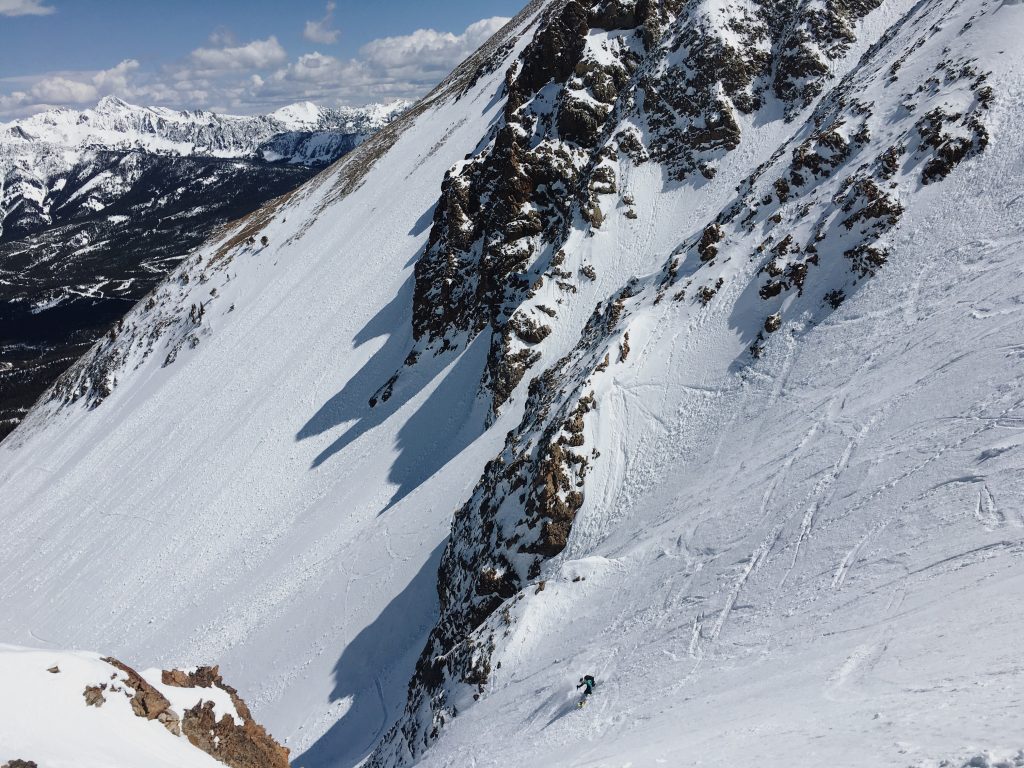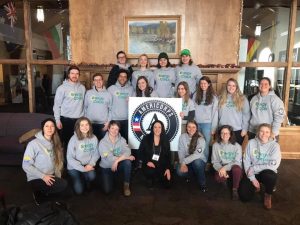By Becca Holdhusen
I forgot how rainy a Montana spring is. I am grateful for the overcast when spending time in the office, but less so on weekends during the last month of skiing. The sunny days are noticeable – there are less cars downtown as they are replaced by bikes, the running trails are finally dry, and the public library has started hosting gardening workshops. On Tuesday, I spent my afternoon planting garden beds for the new Story Mill Learning Garden in Bozeman, a project partially spearheaded by the Gallatin Valley Food Bank. It was raining, so the only volunteers were me and another 23 year-old named Maddy. We talked about skiing, liberal arts colleges, and our general discontent with the idea of joining the workforce. I expressed surprise that she was volunteering without affiliation to the HRDC. I associate volunteering in Montana with retired adults, required community service, and (at least in Bozeman) reluctant high school seniors attempting to fulfill community service requirements for college applications. She, contrastingly, was surprised to see very little engagement from college students and twenty-somethings in the volunteer community. Maddy grew up in the Bay Area and was an active volunteer in the town where she attended college, so she saw the low engagement of young people in community service in Bozeman abnormal. Reflecting on this phenomenon, we discussed why we thought a place like Bozeman, with so many young people, saw such little engagement in service or community building from our population.
The root of it, I believe in part, is the mentality adopted by young people pursuing mountain sports. Outdoor sport communities are tight knit and engaged, but often in the physical successes of individuals. Last year, High Country News wrote an article titled “Your Stoke Won’t Save Us,” an apt critique of a culture that promotes individual success and accomplishment over critical self-examination or engagement in the communities that help facilitate these lifestyles. I have long thought of the mountain lifestyle as a selfish one, which is difficult to grapple with as an avid skier, hiker, and (recently) a climber myself. “Service” in outdoor culture is often focused around impact on the land – leave no trace principles, trash cleanup days at local climbing crags, or a day of mountain bike trail maintenance. These service activities do ensure the continuation of outdoor lifestyles, but rarely do they focus on the communities where athletes live. This isn’t to say that recreation-based volunteerism isn’t important or that young people don’t engage in their communities. It was apparent through the Serve Montana symposium that there is a large population of young people investing their time and energy into service, and are doing so in a thoughtful and critical manner. I do want to point out that there tends to be a theme in how young recreationists engage in service, and it’s often correlated with who they view as their community and what they believe they have a stake in.
When I was applying for Energy Corps positions, I prioritized the location of Bozeman. I wanted access to mountains, a climbing gym, and the university. My last AmeriCorps service term was in Jackson, WY, and it was often hard to parse out if we were all there to “serve the community” or if we wanted an excuse to be in the Tetons for a summer – it was a combination of both. I think place is deeply integral to a person’s happiness and identity, so I do not want to minimize the significance of mountain communities as Meccas for deep personal fulfillment. I have surely found mine through access to beautiful places and adrenaline sports. Instead, I want to push back against the lack of investment we see in these communities by young people pursuing active mountain lifestyles. There is a communal grieving palpable in older generations in Bozeman as they watch the town they knew so intimately transform into a bustling main street filled with boutiques and fine dining establishments. The rural gentrification of mountain towns is well documented at this point, driven by wealth and seen most acutely in vacation real estate and ski resort development. Young people play into this system by coding themselves as “dirtbags” or “ski bums,” likely leveraging preexisting privilege to exist comfortably in mountain towns and working low-paying industry jobs to fund their (our – I am very much a part of this trend) lifestyles.
I could argue the inherent problematization of this lifestyle – how it is overwhelmingly white and affluent young people who have access to and feel comfortable in spaces where people recreate outdoors. There are plenty of articles and ongoing dialogues about how to increase diversity, equity, and inclusion in the outdoor industry – it is messy work and very much still in progress. Rather, I want to focus on the realities of the people already living with access to these spaces, and why we see such familiar patterns in changing mountain towns. The ephemeral nature of seasonal work or outdoor cultures gives young people the sense that they do not need to invest in the community they live in because there is no longevity in that investment. The most hopeful future for places like Bozeman rests in the assumption that new transplants, young people, and existing community members will all invest equally in creating a vibrant community that honors the needs of everyone in it. Serving with the HRDC centers this hope in my vision for Bozeman’s future because I am aware of the multitude of resources available for community members struggling to exist in the changing economy and culture. Conversely, there are also an incredible amount of opportunities for community members to volunteer through the HRDC, and I hope cultural shifts encourage more young people to see the Bozeman community as a place they benefit from and have a stake in, even if we are just passing through. Moving forward, I want to encourage my friends to join me in volunteering with the Food Bank, serving summer lunches for kids, or attending community events. This is our community as much as it is anyone’s, and we owe it our appreciation. I hope that someday community service and engagement isn’t seen as noble or additional, but instead as a necessary investment by everyone to create the best and healthiest community for all of its members.








